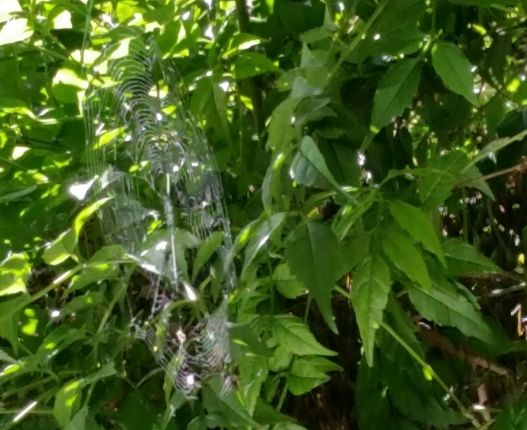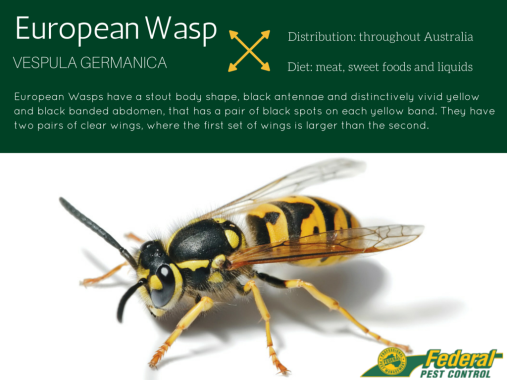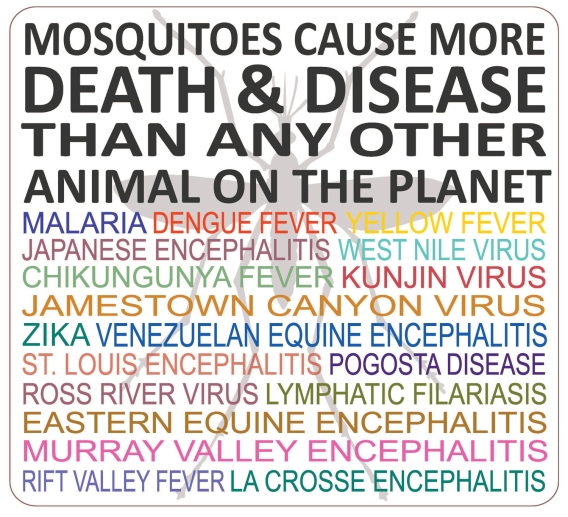
Okay, I admit some of the above-mentioned creepy crawlies are beautiful (actually only the butterfly and ladybug) and I understand insects, in fact, all creatures have a place in the ecosystem, but lately there has been more of the creep factor than beauty!

I’ll confess up front to an ambivalence towards spiders – a creature Australia seems to have too many of and of course, they love my old weatherboard house and surrounds.
I look out the kitchen window and the webs are there.
I walk out to the front porch and the spiders are there along with some other strange insects!
Daughter, Mary Jane complains often about the spider webs stretching from her car mirrors to the garden bed. They appear no matter where she parks in the driveway.
Daughter, Anne can sense a spider in the vicinity even if tiny and an anxiety attack is sparked. The spider must be removed before she’ll settle in a room!
One of my first memories of coming to live in Australia as a nine-year-old was sitting at the kitchen table in the old weatherboard house our family rented in Croydon. I’m not certain if it was my Dad or an older brother who casually pointed above my head at the wall and said, ‘watch out for the spider.’
We were always playing tricks on each other, so I ignored the warning until I saw my sisters and younger brother hurry from the table. I turned around in time to see a huntsman the size of a saucer scurry across the wall. Needless to say, I slithered under the table and followed the others outside.

Ironically, we became immune to some of the spiders in the ‘old house’ to the extent that one lived above the old wood stove at my dad’s behest because it kept flies at bay. We nicknamed him Oscar.
However, Mum wasn’t as benevolent and didn’t shed a tear when Oscar disappeared up the vacuum cleaner one day!
Fifty-five years later I’ve encountered plenty of spiders – Red Backs along the fenceline and White Tails inside when we renovated.
The other day Mary Jane killed a Red Back on the porch – apparently, there’s an increase of them in Melbourne because of the weather. Around 300 people are bitten every year in Australia.
In recent weeks, pest controllers have been inundated with calls from Melbournians who have spotted the spiders in their homes and gardens… .the hot weather has made them come out in force.
“This time of the year, we’ve got lovely blue skies, we’ve got some humidity and we had some rain a few days ago, so there’s plenty of food for the spiders to eat,” Simon Dixon from Exopest said.
White Tail spiders are nasty little creatures and I’ve been bitten several times. John got bitten once when we were renovating and took a severe allergic reaction.
Whitetail spiders frequently occupy Melbourne homes. They seek shelter in dark nooks and crevices and at night time they go about their business eating other spiders found lurking around the home. As they don’t spin a web to catch prey, when it comes time for them to rest, they sometimes find problematic places. Towels and toys left on the floor, curtains and bedsheets and lonesome shoes are a common hiding place. Whilst they are not vicious spiders, they will bite if feeling threatened. It’s easy to see how an unsuspecting human can quickly become the recipient of a painful venomous bite.
Common signs and symptoms of a Whitetail Spider bites include instant pain similar to a bee sting. There is redness, discomfort and swelling. Ulcerations can develop and the recipient is left open to the possibility of infection at the site. In a minority of victims, there is the potential to suffer a nasty reaction such as flue like symptoms and anaphylaxis.
While working in the garden I’ve often come across various garden varieties of spider, or rather they’ve come across me. Sometimes the bites require a visit to the doctor because of the rash or pain caused.
Like most people, I give spiders a wide berth when I can and not surprisingly they were a subject of my early poetry in Small Talk poems for children, Employ Publishing 1994.
Nature’s Web
Mairi Neil
Caring for the environment is an urgent task,
stop slaughtering wildlife, poisoning waterways,
and polluting the air – is all I ask.
However…
I may respect the right of creatures
great and small
but this doesn’t mean a universal
love for all.
I live life with minimal environmental damage
I don’t buy toxic sprays or insecticides
and in the garden rampage.
Even revolting ‘blowies’, when inside
they venture
are swatted with a plastic hand
as effective deadly censure.
But…
The one creature that has me terrified,
makes me absolutely petrified
if ever it manages to creep inside,
has eight legs and a body round
and in the most unlikely places found –
it can be small and brown, or big and black,
some can swing, some can jump…
all can crawl up your back!
‘Live and let live’ is all right in theory
but if you suffer arachnophobia
that sort of tolerance makes you teary.
I know nature is wonderful
I know nature is grand
but I’d love to be rid of ALL spiders
from this land!
I’m not the only one put off by spiders as this news item about “a sizeable spider” on a suburban train testifies.
The spider successfully annexed a set of four seats on the crowded peak-hour service, as well as two seats in the row behind that it might have been eyeing off for the extra legroom.
Funnel-web spider venom could provide stroke protection
The above headline relates to an article about research being done to prevent stroke victims from suffering brain damage.
One of Australia’s most fearsome spiders may provide the solution to protecting stroke victims from suffering brain damage.
Researchers at The University of Queensland and Monash University have found that a protein in the DNA of the funnel-web spider’s venom shuts down an ion channel known to malfunction in brain cells after strokes.
In cell experiments, the harmless chemical (called Hi1a) protected brain cells from a toxic flood of ions unleashed after a stroke strikes.
During a stroke, a blockage stops or slows the flow of blood to an area of the brain. The brain cells, suffering from a lack of blood and oxygen during a stroke then switch to metabolic pathways that don’t rely on oxygen. This creates a condition called acidosis and the oxygen-starved regions of the brain start to become damaged and die off.
Hi1a works by blocking the acid-sensing channels in the brain.
Who would have thought it? I might have to revise my opinion of that particular creepy crawly as the article states,
“Stroke is one of this country’s biggest killers and a leading cause of disability, striking someone in Australia every 10 minutes.“
I’ve also experienced Beetlemania
In December 2012, the Union of Australian Women Southern branch were having their annual Brunch for Peace at the Beach. The gathering is always held on Mordialloc foreshore and as usual as a coordinator and living in Mordialloc, I made my way down early to grab a spot under the shade.
Imagine my surprise to find the place swarming with bugs.
When I arrived, I discovered our usual shady area full of thousands of copulating beetles. Where is David Attenborough when I need him, I thought.
The other women arrived and we tried to ignore the busy insects but the breeding frenzy unsettling and hard to ignore. We tried to brush an area clear but didn’t want to be responsible for reducing some part of the ecosystem’s population. We gave up and moved elsewhere.
After some research, I discovered there were swarms of beetles in suburban gardens in and around Melbourne that summer, identified by scientists as Plague Soldier Beetles, Chauliognathus lugubris.
A native species, its common name refers to its habit of forming huge mating swarms. They can appear in such large numbers that it is not uncommon for them to weigh down the limbs of weaker plants.
Their bright colour warns off predators and they are capable of releasing distasteful chemicals and so would not make a good meal.
It was nice to know the beetles were not interested in harming humans –
not so another more recent encounter with the insect world.
When a Bee Turns Out to be A Wasp
During an afternoon working in the garden clearing overgrown vines from the fenceline, I noticed what I thought was half a dozen bees hovering near the corner of the house.
Later in the evening, when I went outside to bring in the washing I noticed the ‘bees’ were increasing in numbers and were going under the house, almost in a straight line. On closer inspection, I was pretty sure my bees were wasps.

A phone call to a local pest control company and their prompt response confirmed my fears were worse than I realised. The busy bees were European wasps and they had started to build a nest under the house!
Removal of the creepy-crawlies was completed by two men suitably attired with protective gear and spray guns full of a natural powdered essence that killed the wasps or put them into a stupor and drove them elsewhere.
Stop Press – Ross River Fever in Frankston
Last month, the Health Minister announced that six cases of Ross River Fever, a mosquito-borne virus had been detected in Melbourne – some in Frankston – a skip and a jump from Mordialloc.
There is a state-wide outbreak.
Usually, the virus is contained to specific areas where the mosquitoes carrying the virus are found. None of the six cases had travelled to those areas.
According to Wikipedia diseases transmitted by mosquitoes also include: malaria, dengue, West Nile virus, chikungunya, yellow fever, filariasis, Japanese encephalitis, Saint Louis encephalitis, Western equine encephalitis, Eastern equine encephalitis, Venezuelan equine encephalitis, La Crosse encephalitis and Zika fever.
I remember the shock when a close friend from university, Jan Storr died from Murray Valley Encephalitis after a camping holiday. John knew this grief too because a young organiser in his Union died from the same disease.
A lot of grief from such a tiny insect…

Are insects taking over the world?
I’m not paranoid but I’ve never had a wasp invasion before and I’ve never seen so many spiders recently which makes me wonder have insect populations increased?
A quick question to Google and I discovered this research –
Urban Warming Drives Insect Pest Abundance on Street Trees
Our results provide the first evidence that heat can be a key driver of insect pest outbreaks on urban trees. Since urban warming is similar in magnitude to global warming predicted in the next 50 years, pest abundance on city trees may foreshadow widespread outbreaks as natural forests also grow warmer.
… we’re looking at a future full of tiny, deadly insects.
Though scale insects are harmless for humans and don’t conjure up the shivers the way cockroaches and mosquitos do, they might be far more harmful to the environment than these other apocalypse-loving pests. The main problem is that they attack trees, which are a crucial cornerstone of urban ecosystems.
On Quora the question was asked:
Why don’t insects who outnumber us greatly, take over the world?
The response?
What makes you think they haven’t?
If we exterminated all insects on this planet by whatever means we could invent, we would also doom ourselves.
We rely upon insects and other invertebrates to pollinate our food crops, if we didn’t have pollinators, we’d be dead.
When something dies, invertebrates clear up the corpse. Without them, we’d be living in a fetid mess of rotting corpses, dying from diseases that make mosquito-borne malaria look like fun.
We depend upon insects, even though they are not aware of it, they do rule the world, without them, we’re goners.
Somehow this rational answer isn’t that comforting – global warming could be driving an increase in more that tree insects.
As a writer with an overactive imagination, it’s the stuff horror movies are made of.
I remember Sunday School in Scotland and lustily singing praise to ‘all creatures great and small’ where the extent of interaction with insects was earwigs and bumblebees.
All Things Bright And Beautiful
Cecil F Alexander
Chorus:
All things bright and beautiful,
All creatures great and small,
All things wise and wonderful:
The Lord God made them all.
Each little flower that opens,
Each little bird that sings,
He made their glowing colours,
He made their tiny wings.
The purple-headed mountains,
The river running by,
The sunset and the morning
That brightens up the sky.
The cold wind in the winter,
The pleasant summer sun,
The ripe fruits in the garden,
He made them every one.
The tall trees in the greenwood,
The meadows where we play,
The rushes by the water,
To gather every day.
He gave us eyes to see them,
And lips that we might tell
How great is God Almighty,
Who has made all things well
I’m not sure the same praise applies living in Australia!
The Australian Museum in Sydney ranks Australia’s most dangerous animals based on the level of threat they pose, plus how likely you are to encounter one in the wild.
The honey bee is number 2 on the list and the funnel web spider is number 7!
The humble honey bee, which is not native to Australia, comes second on the list because it’s both common and deadly to small subset of people. Being stung by 100 or so honey bees could put anyone at risk of a fatality, but for those who are highly-allergic, even a single sting can be a life threatening situation.
The honey bee has barbed stings, so it can only sting once. The purpose of the sting is to make you never want to bother a bee ever again…
Since 1927, 14 deaths from the spider have been recorded. It’s only the male bite that has proved fatal, however.
Direct UV light will kill a funnel web, so the spiders need somewhere to hide during the day and have been known to consider a shoe a perfectly adequate location. More commonly, the spiders builds burrows under something like a pile of bricks or a log.
Whenever I go by public transport to visit my daughter Anne I pass a mural at Balaclava Station – large colourful and bright I think it represents the food chain – the insect is much too large for my liking –
Things are definitely not always bright and beautiful – do you agree?











I hope you were listening to Richard Feidler interviewing the spider expert on Radio National today!
LikeLiked by 1 person
Unfortunately, I was working but I’ll check out the transcript – not sure he’ll allay my fears:)
LikeLiked by 1 person
You are worrying way too much about our insect life Mairi – live and let live, taking due care whilst doing so of course! If you really want to see a life full of many and varied insects, come visit me in Binginwarri! As part of one of your quotes in your posts says We NEED insects to survive. And almost all of them have a beauty many fail to see (and if they could not be called beautiful, then they could most likely be appreciated as bizarre. 🙂
LikeLike
Oh, Kaye, I’d love to visit you – on my to do list – but don’t think you will ever convert me to being as enthralled or accepting as you are of those little critters. I admit many are fascinating and I do live and let live as much as I can but when they come too close…. 🙂
LikeLike